- Home
- John Jakes
The Titans Page 25
The Titans Read online
Page 25
Michael smiled. “Why, Sean, you should know moodiness is typical of an Irish fellow. Especially when he’s throwing down a mile of rail a day, and working for a bastard to boot.”
Murphy looked unconvinced. He headed up the aisle between the tiered bunks in the eight-foot-high car. He and Michael were now the laggards. Most of the other laborers had piled out the door at the end, where a rack of repeating Spencer rifles gleamed under the hanging lantern.
“I agree it ain’t quite the soft duty I thought it’d be,” Murphy said. “But thirty-five greenback dollars a month is a sight better than what I was earnin’ haulin’ kegs up and down Lake Street. Wait a damned minute, will you? Got to lace up my blasted boot again.”
Murphy knelt. Michael scratched his groin and gazed at the rifles in the racks. Would they be needed against the Sioux or Cheyenne?
So far there’d been only four raids, each one over before Michael even heard about it. The pattern was always the same. He and the other men would be wakened late in the night by yells and the bang of Spencers. They’d tumble outside, rifles in hand, only to find the drovers who guarded the railroad’s cattle firing futile shots into the darkness from which some Indians had come slipping silently to run off half a dozen head.
After the first theft, Michael and Sean Murphy had learned that information about the Plains tribes given them gratuitously in an Omaha saloon was false. They’d been told the hostiles never struck after the sun went down, fearing that if they were slain at night, their spirits couldn’t find the way to the Indian equivalent of heaven. A drover guarding the herd explained the real reason Plains braves generally avoided nocturnal attacks: the gut strings on war bows grew damp and lost their tautness in the night air. Night thievery of cattle was commonplace, however, since it seldom required the discharge of even a single arrow. There’d been no casualties to the railroad men on any of the raids thus far.
But couriers galloping in from further west, where the grade was being prepared, had recently brought disturbing news about the Indians.
Early in the spring, peace commissioners had been dispatched by the Federal Government to attempt to arrange a treaty with the Sioux and Cheyenne. The tribes stood in the way of miners heading north toward the Big Horn Mountains—the Powder River country—where there’d been a gold strike.
The dispatch of the commission sprang from a shift in Congressional policy. Washington now thought it easier to buy peace on the High Plains than to fight for it. According to what Michael had heard, important chiefs of the Oglala and Brulé Sioux had journeyed to Fort Laramie to listen to the offer of one Mr. Taylor of the Indian Office.
The tribes would be given an annuity of seventy-five thousand dollars a year, plus firearms for hunting, if they’d guarantee the safety of whites traveling the Bozeman Trail to the new diggings. The negotiations had proceeded smoothly at first, then they were abruptly ruined by the arrival of a Brulé chief, Standing Elk, who had encountered a column of white soldiers commanded by a Colonel Carrington. The soldiers were on their way to the Powder River country to build stockades.
Red Cloud, the most influential of the Sioux at the Fort Laramie parley, listened to the report of the army column with shock and anger. Offers of peace were being made even as soldiers tramped northwest to seize the disputed territory! Red Cloud and a great many other braves stormed out of the fort, promising war as repayment for the deception. So even though the U-Pay had experienced no serious trouble as yet, every man at the railhead knew circumstances were ripe for it.
“Broke the damn thing!” Murphy exploded. Part of a thong dangled from his hand. He stood up and stuffed the thong in his pocket. Michael turned away from the rifles and the gloomy thoughts they generated. Murphy returned to the subject of a few moments ago.
“I wanted to speak to you about the boss. I agree it’s a damn shame we drew him as head of our gang—”
“I can’t figure out how a Reb got such a good job, Sean.”
“Corkle told me the fellow ran railroad construction crews in the South, before the war.”
“I heard that too. But he’s still a Reb, and this is mostly a Union outfit.”
“All I can guess is, the Casements believe the only war they should fret about is a war with the calendar. They put experienced men where they can get the best use from ’em.
“Suppose so.” Michael nodded. “All that’s past is forgiven—or so you’re always saying,” he added with a wry smile.
“Well, we both understand I’ve been known to prevaricate on occasion.” Murphy grinned. He remained in the door, intentionally blocking Michael’s passage. “There ain’t a hotter Southron at the railhead than the wretch we’re workin’ for—nor one who likes more to keep fightin’ the late, unlamented war. Friend to friend, Michael, you’re a mite too willing to butt heads with him on that subject—not to mention others.”
“I have a reason. No, make it three.”
“Such as?”
“He’s a bully. He’s a loudmouth. And he’s a liar about the war. He won’t admit fighting for the principle of states’ rights was so much blarney. He and his kind may have fought well, but they were fighting for an immoral cause.”
Here Murphy looked dubious; Michael’s remark didn’t reflect the conventional thinking of most Irishmen, who viewed blacks as an economic threat.
“Nigger slavery, y’mean?”
Another nod. “I also get sick of him claiming it’s only the Northern factories that beat the South. He’s partly right, but I’ll tell you this. At the Round Tops, I saw no factories perishing, I saw Irishmen and Dutchmen. In the Wilderness I didn’t see factories perishing, just Yankee boys.”
“Well, have a care, Michael. He’s no sort to fool with—and I’ve been wanting to remind you of it.”
“I don’t need reminders. I work with him every day. Thanks for your good thoughts, however. I’ll behave. I’m through with fighting. I’m here to work.”
“’An’ they shall beat their swords into plowshares, an’ their spears into pruning hooks—’” Murphy recited the passage with a merry smile. “‘Neither shall they learn war any more’?”
“That’s the general idea,” Michael replied soberly.
“Book of Micah,” the older man announced proudly. “Fourth chapter, third verse. See? I ain’t the godless lout you boys are always accusin’ me of bein’.”
“But it’s from the second chapter, fourth verse, of Isaiah as well as from Micah.”
“What? It is?”
“Yes. And you left out the part about nation not lifting up sword against nation.”
Murphy blinked. “My stars, I never took you for a Bible student!”
“It’s the only book my mother owned when I was a boy in the slums. She died when I was seven, but she’d already taught me to read a few passages, and persuaded me to study it to learn moral behavior. When she passed away, and I went on the streets and worked on the docks, I kept a Bible with me. For every moral lesson I took out of the pages, I saw two of the opposite kind happening in New York. But it was my principal teacher of decent English.”
“And you’re way ahead of me on the subject of the boss. Relieved to hear it.” Murphy winked. “Certainly ’twasn’t him you were thinkin’ of last night. Along with the war, you had a gal on your mind, didn’t you?”
Curtly: “No.”
“Why, you did! You kept yellin’ her name in your sleep.”
Michael’s face went blank. “You must have heard wrong.”
“I’m positive I did not. Who is she, lad? Some Chicago colleen you never mentioned to me? Or one of them farm lasses you met down in Ohio?”
“Sean,” Michael said, his smile affable but not his eyes, “we may be friends, good friends. But certain things are none of your affair. Quit swinging your clapper and let’s go eat.”
The younger man’s expression had grown so grim, Murphy acquiesced without a murmur.
Chapter II
The Railhead
<
br /> i
THUS, AT DAWN ON a Saturday morning near the end of August 1866, Michael Boyle and Sean Murphy climbed down from one of the four cars standing with a locomotive coupled at the rear. Steam was already up on the 4-4-0 Danforth and Cooke wood burner named Osceola. The engine’s cowcatcher pointed east along the single track.
Osceola and a quartet of double-sized boxcars constituted the railhead work train—the “perpetual train” as it was called by the Paddies who were pushing the line westward in an effort to silence doubters, lure more investors, and turn the foundering U-Pay into a success.
Dr. Thomas Durant, the vice president and general manager of the Union Pacific, had in fact made a public commitment to finish two hundred and forty-seven miles of roadbed across the Nebraska Territory as soon as possible. Milepost 247 would be erected on the hundredth meridian. Until the meridian was reached, the line’s charter to build and operate the eastern portion of the transcontinental railroad would not become official. So a growing number of ex-soldiers and day laborers from the cities were driving toward the meridian at a pace even the hardiest newcomers had trouble keeping up with at first. Michael well recalled the agony he’d suffered during his first two weeks at the railhead. Every night, he’d dragged himself up to his bunk, his whole body in pain.
Already there was noise and movement around the perpetual train. The sun had barely risen. But the light was bright enough to reveal a barren yet strangely beautiful ocean of grass, gently rolling, and treeless for as far as a man could see. The light burnished the greenish-gray buffalo grass and here and there illuminated radiant patches of purple pasqueflower, crimson wild geranium, and yellow prairie smoke.
West of the four huge freight cars lay the grade, prepared by gangs following the location stakes as far as a hundred miles in advance of the moving railhead. To the rear stretched the shimmering parallel rails, running a good two hundred miles to the Missouri River. Back past Fort Kearney at milepost 191—the last real outpost of civilization, if a ramshackle infantry stockade and a collection of shanties could be called civilization. Back past the division point at Grand Island. Back past Fremont, only forty miles out of Omaha—or Bilksville as it was called by those who still considered the railroad a foolish venture destined to fail.
Fremont was as far as the rails had gotten by January of ’66, even though Dr. Durant and other officials of the line had broken ground at Omaha almost a year earlier. There’d been poor progress until two men, the Casement brothers, had submitted a bid as subcontractors for track laying. Now the line was advancing at the rate of two rails every minute, four hundred rails every mile—and a mile of new track between sunup and sunset, six days a week. Michael found the speed astonishing—just as he found the sights of the prairie fresh and astonishing almost every morning. Today was no exception.
He stretched, beginning to throw off the lethargy of sleep and the memory of the nightmare. He drew in deep breaths of the cool, sweet air tanged with the smell of burning wood and the reek of valve oil from the funnel-stack locomotive. Men were hurrying from the two bunk cars to the dining car, second from the head end. The first car served as a combination office and kitchen.
A few late risers were rolling out of hammocks slung beneath the car where Michael and Murphy slept. Others were climbing down from tents erected on top. General Jack Casement’s army of rust eaters was growing week by week. Over four hundred men worked at the railhead now.
Smoke drifted across the paling stars, breeze-borne from vents in the roof of the kitchen. Michael thought he smelled fresh bread. He certainly smelled cow dung. To his left, five hundred head were rousing and milling, prodded by the drovers. The herd were the railhead’s traveling meat supply; the four Indian raids had not cut into it substantially.
The lowing cows raised dust. But the Platte River, shallow, twisting and beginning to glow with sunlight, was still visible through the cloud. On the far side of the river characterized as “a mile wide and an inch deep,” Michael could discern the ruts of the Overland Trail leading on to Fort Laramie and Oregon. Sometimes the road was noisy with freight wagons, or a stagecoach, or parties of buffalo hunters. This morning it was deserted.
But it had seen traffic during the night. He smiled at the sight of a couple of the transcontinental telegraph poles planted beside the trail. The poles had been pushed until they tilted to a forty-five-degree angle. Buffalo had passed, pausing to scratch off some of their shedding hump manes.
Michael and Sean Murphy trudged on toward the nearest line of men waiting their turn in the dining car. A similar line had formed at the car’s other end. The morning bell rang at five thirty. In less than an hour, the first of the iron trains carrying a carefully calculated quantity of rails and ties, spikes and chairs would come chugging in from the supply base at Kearney. Then the workday—twelve hours or more—would begin.
The activity and numbers of men around the work train hardly suggested the difficulties the transcontinental line had encountered since the passage of the Pacific Railroad Acts. Michael knew a great deal about the Union Pacific’s history. The supply trains brought newspapers as well as mail, and he’d become an avid student of the project.
The concept of a rail link between the oceans had been under discussion for years. Proposed routes had been debated in Congress and at the cabinet level for a decade. In the fifties, while he was Franklin Pierce’s Secretary of War, Jefferson Davis had obtained surveys of several possible routes. But the start of the four-year rebellion had interrupted the decision process, even though Lincoln by then had enough data on which to act.
In California a young engineer named Theodore Judah had located and mapped a feasible route through the Sierras. Other surveys, including those by the Union Pacific’s new chief engineer, former U.S. Army general Grenville Dodge, had shown that the most practical route from the Missouri began at Omaha and ran toward the point where the Overland Trail joined the Platte.
Finally Lincoln had moved. He saw the railroad as a means of symbolically unifying the Atlantic and Pacific states and of solidifying the Union’s hold on all the land between. Congress and the President had put the first Pacific Railroad Act into law in July of 1862, chartering two corporations: the Union Pacific, which was to build the line from the Missouri River, and the Central Pacific, which would begin eastbound construction at Sacramento.
The terms of the Railroad Act seemed ideal for attracting risk capital. The government had granted both corporations ten miles of land in alternating sections on either side of a four-hundred-foot right of way, ten miles in return for every mile of track laid. Resale of this land to settlers, it was presumed, would help finance the project. In addition, the Act had authorized Federal subsidies in the form of thirty-year bonds. The amount of the subsidy per mile of completed track depended on the terrain. On the plains, the rate was sixteen thousand dollars a mile. It jumped to forty-eight thousand a mile in the Rocky Mountains and the Sierras.
Control of the Central Pacific was in the hands of a group called The Big Four. The first of the quartet was California’s governor, Leland Stanford. His partners were three merchants from the Sacramento Valley—a grocer and vegetarian named Mark Hopkins, and a pair of hardware merchants, Collis Huntington and Charles Crocker. Their eastern counterparts were a group of businessmen led by Dr. Durant, a canny man who’d abandoned medicine for a career as a railway promoter.
Despite the government’s generosity, the sale of each corporation’s stocks and bonds had lagged because of the financial community’s disinterest. No shrewd investor wanted to dump money into a railroad across a wilderness when so much more could be made supplying war material to the Federal Government. So a second Railroad Act had become necessary in ’64. Among its other provisions, it doubled the land granted per mile; the two companies would eventually control over twenty-one million acres.
But even this failed to attract capital. By mid-1864, the Central Pacific had laid exactly thirty-one miles of track. The U
nion Pacific’s rails didn’t extend beyond the Omaha city limits.
Once more Lincoln had stepped in, this time primarily on behalf of the Union Pacific. He’d sought the services of “the King of Spades”—Massachusetts congressman Oakes Ames, who’d made a fortune from the manufacture and sale of Ames Old Colony Mining Shovels. Lincoln wanted Ames to put not only his money but his personal prestige behind the line. Oakes Ames and his brother Oliver poured in a million of their own funds, and attracted another million and a half—but it was still not enough. War profiteering and skepticism continued to deter investors.
Michael had read a good deal about the directors of both railroads. He’d also heard his share of gossip. Durant’s crowd and The Big Four might be greedy, but they were neither lazy nor stupid. They wanted the line built not only because it might yield unprecedented profits, but also for the sheer thrill of accomplishing an engineering feat of incredible magnitude.
There was mounting evidence, however, that the directors of the lines were beginning to indulge in freebooting on a grand scale. Big Four director Huntington, for example, had scored a major coup with the subsidies. It had been President Lincoln’s responsibility to fix the place at which the sixteen-thousand-dollar Sacramento Valley subsidy was replaced by the forty-eight-thousand-dollar one for construction in the Sierra foothills. Huntington had enlisted a friendly geologist who reported that the Sierras actually “began” at Arcade Creek, twenty-four miles west of the point designated in Theodore Judah’s original survey. At Arcade, reddish mountain soil could be found mingled with the blacker dirt of the Valley. The fact that the soil had washed down there was glossed over.
Armed with the “dramatic new findings,” Huntington had launched a campaign in Washington. Prompted by a cooperative Congressman, Lincoln restudied his maps and accepted the Central Pacific claim—thus giving the line an additional two dozen miles at the considerably higher rate. “Pertinacity and Abraham’s faith,” ran a wry report of the maneuvering, “removed mountains.”

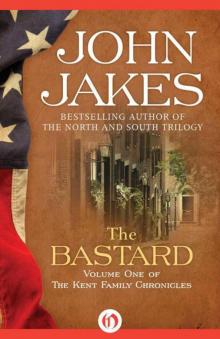 The Bastard
The Bastard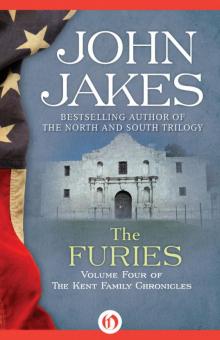 The Furies
The Furies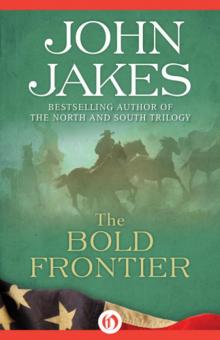 The Bold Frontier
The Bold Frontier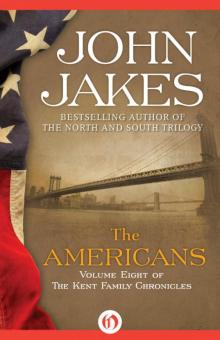 The Americans
The Americans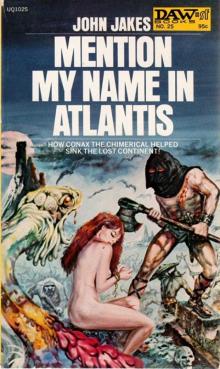 Mention My Name in Atlantis
Mention My Name in Atlantis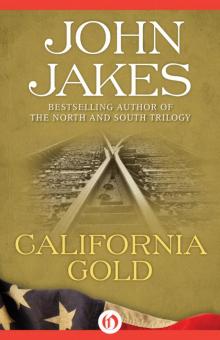 California Gold
California Gold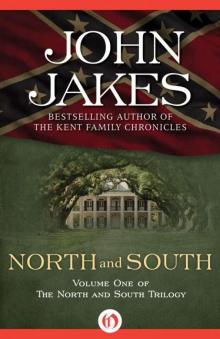 North and South
North and South Savannah, or a Gift for Mr. Lincoln
Savannah, or a Gift for Mr. Lincoln Heaven and Hell
Heaven and Hell Homeland
Homeland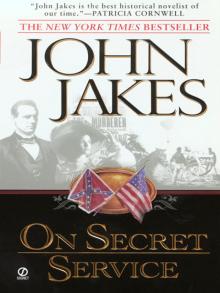 On Secret Service
On Secret Service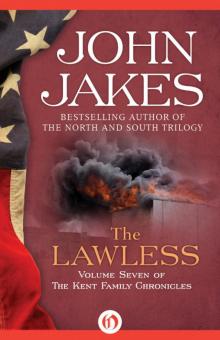 The Lawless
The Lawless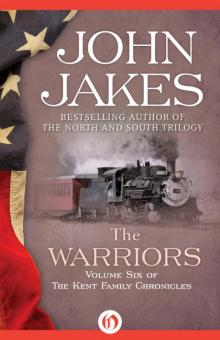 The Titans
The Titans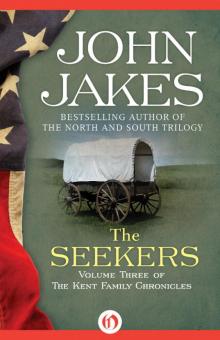 The Seekers
The Seekers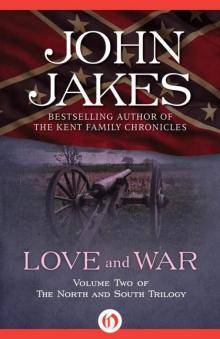 Love and War
Love and War North and South: The North and South Trilogy (Book One)
North and South: The North and South Trilogy (Book One)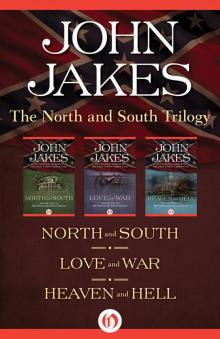 North and South Trilogy
North and South Trilogy Love and War: The North and South Trilogy
Love and War: The North and South Trilogy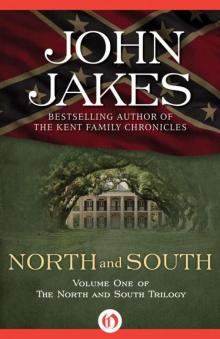 North and South: The North and South Trilogy
North and South: The North and South Trilogy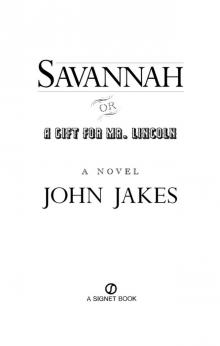 Savannah
Savannah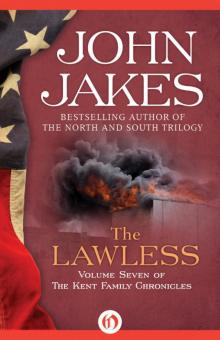 Lawless
Lawless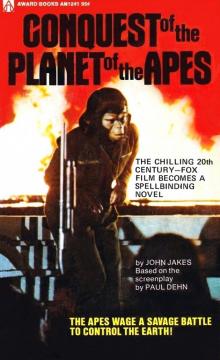 Conquest Of The Planet Of The Apes
Conquest Of The Planet Of The Apes Love and War: The North and South Trilogy (Book Two)
Love and War: The North and South Trilogy (Book Two)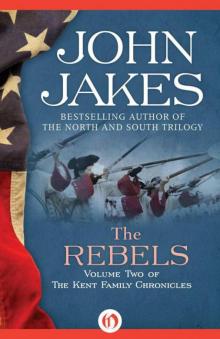 The Rebels: The Kent Family Chronicles
The Rebels: The Kent Family Chronicles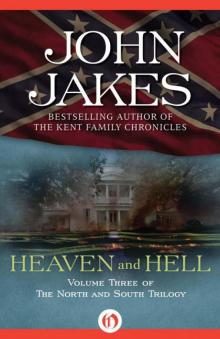 Heaven and Hell: The North and South Trilogy
Heaven and Hell: The North and South Trilogy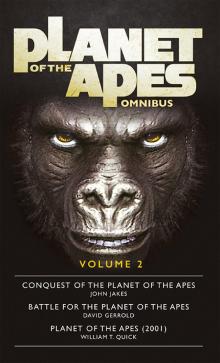 Planet of the Apes Omnibus 2
Planet of the Apes Omnibus 2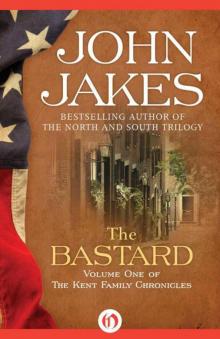 The Bastard: The Kent Family Chronicles
The Bastard: The Kent Family Chronicles Heaven and Hell: The North and South Trilogy (Book Three)
Heaven and Hell: The North and South Trilogy (Book Three)